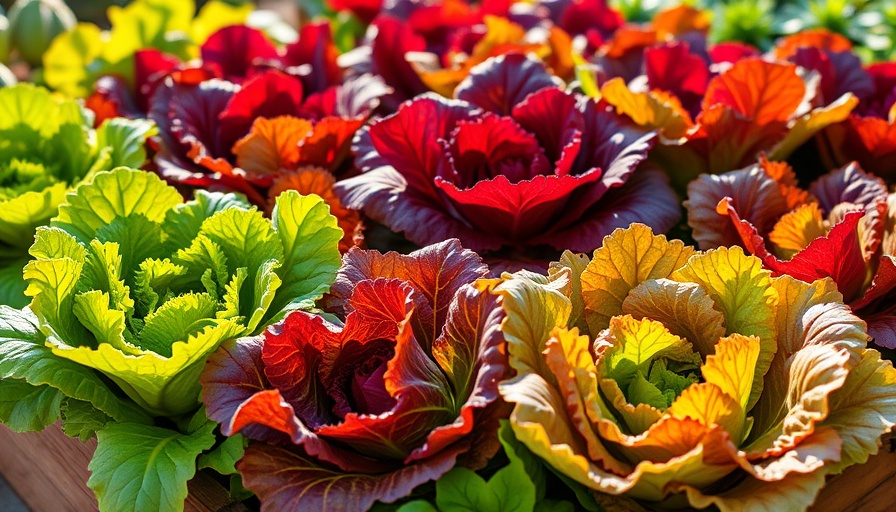
Explore the Best Types of Lettuce for Your Home Garden
If you've ever thumbed through a seed catalogue, you've likely been overwhelmed by the plethora of lettuce options available. From crispy, refreshing heads to vibrant loose-leaf varieties, the world of lettuce is diverse and inviting for home gardeners. Not only is lettuce a staple in most grocery stores, but growing it yourself can bring a wealth of flavor and freshness to your salads and meals. Today, let’s explore the different types of lettuce to cultivate at home!
Understanding Lettuce Varieties
Lettuce can be broadly categorized into four main types: butterhead, crisphead, romaine, and loose-leaf. Each variety has its own texture, flavor, and ideal growing conditions. For instance, butterhead lettuce is known for its tender leaves and sweet flavor, while crisphead lettuce, like the well-known iceberg, offers a crunch that many salad lovers adore.
Benefits of Growing Your Own Lettuce
Growing lettuce at home not only ensures you have access to fresh greens but also offers significant cost savings. Additionally, homegrown lettuce can be harvested as needed, which minimizes waste and enhances the flavor compared to store-bought options. Plus, knowing the conditions under which your produce was grown gives an added sense of satisfaction.
Tips for Successful Lettuce Cultivation
Let’s dive into some expert tips that can help you achieve a bountiful lettuce harvest. First, it's vital to recognize that lettuce is best grown in cool seasons, typically spring and fall. During the heat of summer, the risk of bolting—when the plant decides to flower and produce seeds, resulting in bitter leaves—greatly increases. Succession planting is a smart technique where gardeners stagger their planting at intervals to have a continuous harvest.
Harvesting Techniques: When and How to Pick
For head lettuce, you want to ensure that you harvest the entire head when it’s mature, cutting off the stem at the base. On the other hand, loose-leaf varieties are more forgiving; you can harvest individual leaves while the plant continues to grow, allowing for multiple harvests throughout the season.
Healthy Pest Management for Your Garden
To keep your lettuce healthy, it’s essential to embrace beneficial insects as part of your gardening pests control plan. Predatory wasps, ladybugs, and other beneficial species can help manage harmful pests naturally, reducing your reliance on chemical treatments.
Advanced Growing Techniques for Lettuce
Consider employing vertical gardening practices to maximize your space, particularly valuable for urban gardeners or those with limited yard space. Using vertical planters can help optimize sunlight exposure and improve air circulation, which is beneficial for preventing mold and rot in tightly packed plants.
Conclusion: Your Lettuce Adventure Awaits!
Embarking on the journey of growing different types of lettuce is not just about cultivating plants; it’s about nurturing a connection with food and nature. As you dig into the soil, nurture the seeds, and eventually enjoy the fresh crunch of your lettuce, you are participating in something incredibly fulfilling. So grab your gardening tools, choose your favorite varieties, and enjoy the process of planting, growing, and harvesting!
 Add Row
Add Row  Add
Add 




Write A Comment